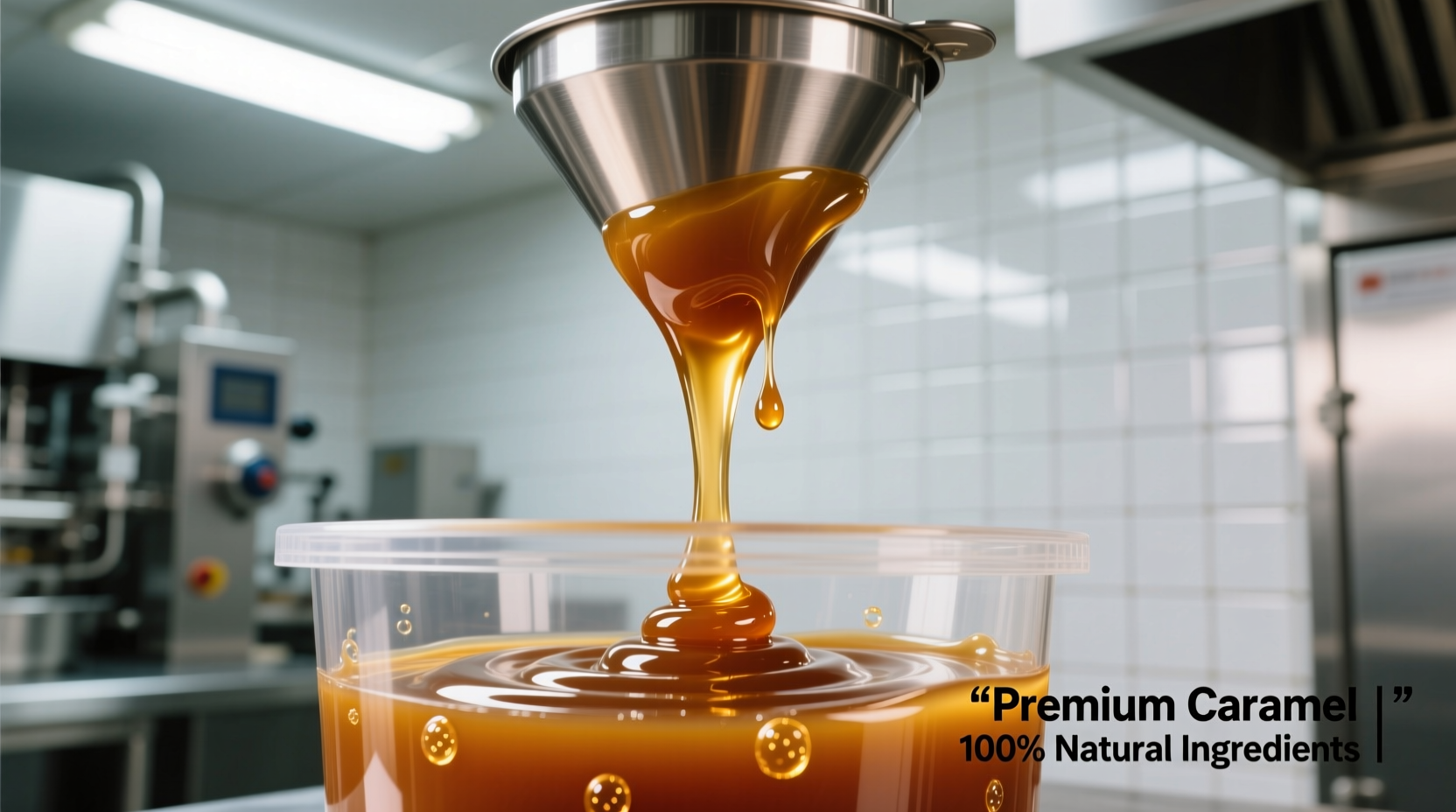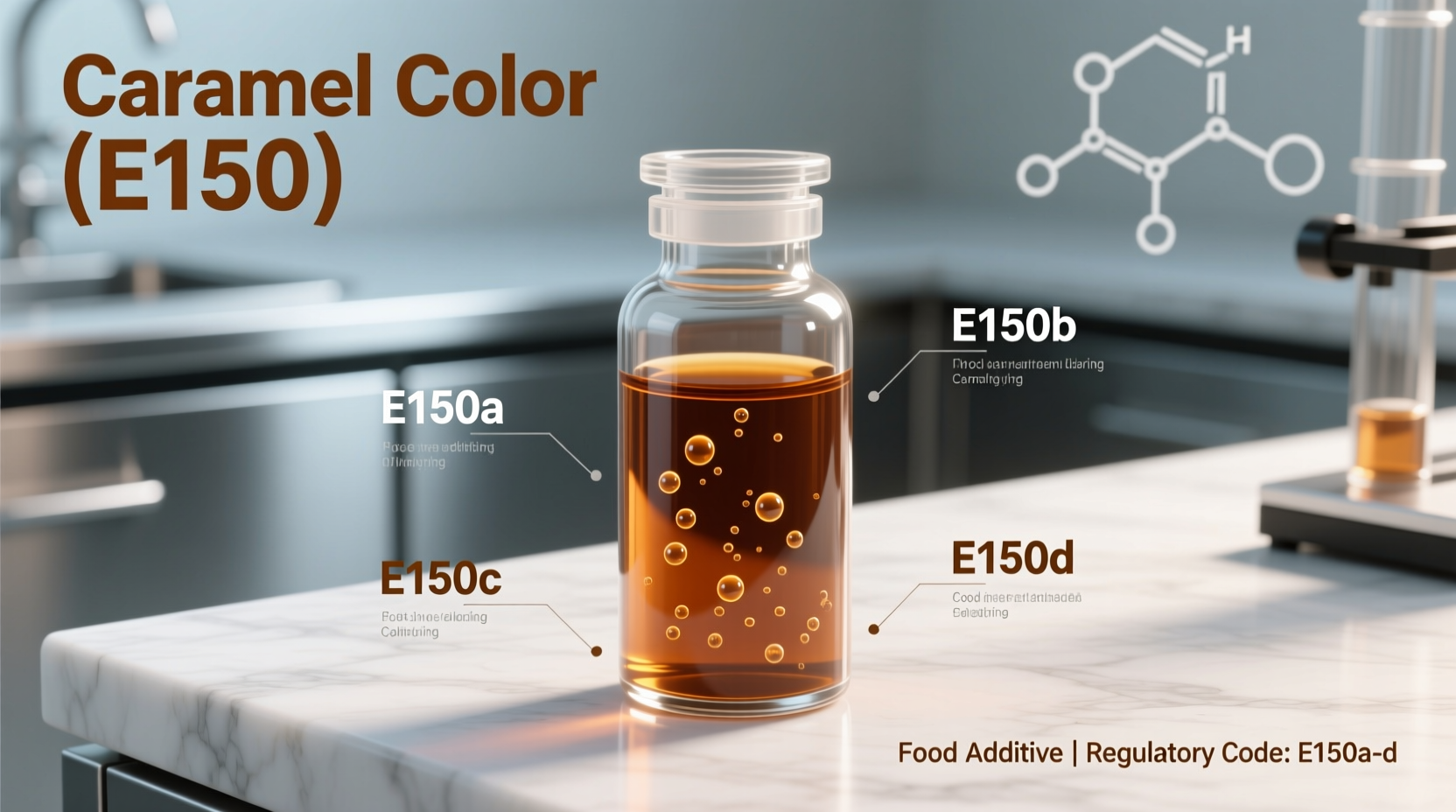Have you ever wondered why your cola has that distinctive brown color or what gives soy sauce its rich hue? The answer lies in caramel color—one of the most widely used food colorings globally. Understanding this common ingredient helps you make informed choices about what you consume while appreciating the science behind everyday foods.
What Exactly Is Caramel Color?
Caramel color isn't the same as the caramel you make at home for desserts. It's a standardized food coloring created through a controlled industrial process called caramelization. Food manufacturers produce caramel color by carefully heating carbohydrates—typically glucose syrup, sucrose, or invert sugar—sometimes with approved additives that control the reaction and final color properties.
This precise manufacturing process creates water-soluble colorants that provide consistent, stable coloring without altering taste. Unlike homemade caramel which is primarily sugar and water, commercial caramel color production may include small amounts of food-grade acids, alkalis, or salts to achieve specific color tones and stability required for different food applications.
The Science Behind Caramel Color Production
The creation of caramel color involves a complex chemical process known as the Maillard reaction combined with caramelization. When carbohydrates are heated to 130-180°C (266-356°F), they undergo molecular changes that produce hundreds of compounds responsible for both color and subtle flavor characteristics.
Manufacturers carefully control four key factors during production:
- Temperature and heating duration
- Type of carbohydrate used
- pH level (acidity or alkalinity)
- Additional processing aids
These variables determine the final product's color intensity, hue, and functional properties. The resulting liquid or powder is then purified and standardized to meet strict food industry specifications before being incorporated into consumer products.
| Caramel Color Class | Processing Agents | Common Applications | h>Color Range |
|---|---|---|---|
| Class I (Plain) | None or only heat | Baked goods, desserts | Light yellow to amber |
| Class II (Caustic Sulfite) | Sulfites | Alcoholic beverages | Amber to medium brown |
| Class III (Ammonia Process) | Ammonium compounds | Soy sauce, seasonings | Medium to dark brown |
| Class IV (Sulfite Ammonia) | Sulfites & ammonium | Colas, gravies, sauces | Dark brown to black |
Why Food Manufacturers Rely on Caramel Color
Caramel color serves several important functions beyond simple coloring. It provides product consistency that consumers expect—imagine if every bottle of cola varied dramatically in color. This standardization builds brand recognition and consumer trust in product quality.
Unlike natural alternatives that may fade or change during storage, caramel color offers exceptional stability against heat, light, and pH variations. This makes it indispensable for products requiring long shelf lives or exposure to varying conditions. Additionally, caramel color doesn't introduce competing flavors that might interfere with a product's intended taste profile.
Safety Profile and Regulatory Oversight
Caramel color has undergone extensive safety evaluation by food authorities worldwide. The U.S. Food and Drug Administration (FDA) classifies it as Generally Recognized As Safe (GRAS) under 21 CFR §73.85, with specific limitations for certain classes. Similarly, the European Food Safety Authority (EFSA) has established acceptable daily intakes after comprehensive reviews available in their 2016 scientific opinion.
Concerns occasionally arise about 4-methylimidazole (4-MEI), a trace compound formed during some caramel color production processes. However, regulatory agencies have determined that the levels found in foods pose no risk to consumers. The FDA states: "Caramel colors are safe for their intended use in food at levels necessary to achieve the desired coloring effect" as documented in their caramel color information page.

Where You'll Find Caramel Color in Your Pantry
Check your kitchen cabinets and you'll likely find caramel color in numerous products. It's most famously used in cola beverages, giving them their characteristic brown hue. But it also appears in less obvious places like:
- Beer and malt beverages for consistent color
- Soy sauce and other fermented condiments
- Baked goods for golden-brown appearance
- Gravies, broths, and prepared meals
- Vinegars and flavored syrups
- Chocolate-flavored products for color enhancement
When reading ingredient labels, look for terms like "caramel color," "color added," or "E150" (the European food additive code). Don't confuse it with "caramel flavor" which serves a different purpose in food formulation.
Natural Alternatives and Consumer Choices
Some consumers prefer to avoid manufactured food colorings, leading to increased interest in natural alternatives. Options include:
- Roasted malt extract for beverages
- Concentrated fruit or vegetable juices
- Toasted sugar preparations
- Wood smoke flavorings
However, these alternatives often come with limitations—they may affect flavor, lack stability, or create inconsistent coloring. Food scientists continue researching improved natural coloring solutions, but caramel color remains the most effective option for many applications requiring precise, stable coloring without flavor interference.
Making Informed Decisions About Caramel Color
Understanding caramel color helps you navigate ingredient lists with confidence. This common food additive serves important functional purposes in maintaining product consistency and appearance that consumers expect. Regulatory agencies worldwide continue to monitor its safety, with current evidence supporting its safe use within established limits.
When evaluating products containing caramel color, consider the overall nutritional profile rather than focusing on this single ingredient. For most people, caramel color presents no health concerns and serves as a practical solution for achieving consistent, appealing food products across global markets.











 浙公网安备
33010002000092号
浙公网安备
33010002000092号 浙B2-20120091-4
浙B2-20120091-4